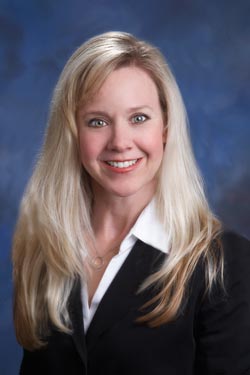Q&A — Sara Kudrle, Strategic Marketing, Grass Valley, a Belden Brand, USA
HOLLYWOOD, CALIF.—Shortly before the start of the SMPTE 2015 Annual Technical Conference & Exhibition, TV Technology spoke with Sara Kudrle about her upcoming session “Media Workflows: Automated Techniques for Quality, Captions and Ad Insertions — Can They Work?.”
TV TECHNOLOGY: Are most of these techniques now done more or less manually? Won’t video quality, captions and ad insertion always require some level of human intervention — at least in terms of monitoring?
Sara Kudrle
SARA KUDRLE: There are many techniques available for quality monitoring, captions and ad insertion, and yes, there is still a need for manual intervention in many cases. Some software solutions make clever decisions based on presets or rules, that allow the software to take some action regarding errors or issues discovered, including corrections. Even though this required someone to set the rules or presets for the software to follow, the intervention is a “set once” scenario for those defined issues.
TVT: What are some of the obstacles to automating these functions?
KUDRLE: Some of the obstacles for automating functions are defining every possible scenario that could occur. Software will follow rules, but the rules need to be defined. Unlike people, who will adapt to unknown situations, the software will be restricted to what it is programmed to do. However, software can be updated with these new scenarios as they are encountered, which will improve the accuracy of the application.
Another obstacle is the human kind. People are naturally averse to change, and adding automation to a workflow will reduce the manual involvement, and possibly cause fear of becoming irrelevant. But, the great thing about automation is it allows your people to accomplish more, thereby allowing your operation to grow.
TVT: What is the chief benefit?
KUDRLE: There are several benefits to automating these functions. First of all, by automating functions, the number of tasks that can be accomplished per operator is much greater and these can be accomplished much faster, in many cases, with greater precision.
Secondly, subtle errors can be identified, which could be difficult for humans to notice, especially if multiple errors are occurring simultaneously. So, a more thorough and efficient system is created.
Third, software offers consistency. It does not matter if it is the first project of the day or the one thousandth; the results will be the same. Software does not get tired or distracted and can work 24x7.
And with more channels, more audio per channel, and more regulations to comply with, having an automated way to handle it is desirable. To add to this, the ability of software to log every action automatically can drastically help with proving compliance when needed.
For example, consider an operator working for a large station group or a playout provider who’s tasked with monitoring as many as 12-24 channels of programming at any given time. When that operator is asked to ensure that appropriate content is playing it can be easy to miss an error—especially if multiple errors take place simultaneously. Grass Valley offers a solution within its monitoring products called a Penalty Box, similar to other solutions on the market, which automatically alert the operator about channels or programs that fall outside preset parameters. In doing so, the automated system has told the operator which error to address. This sort of automation is critical to OPEX efficiency.
TVT: What is required to integrate these techniques into an existing workflow?
KUDRLE: A thorough understanding of your challenges and potential solutions is critical. A broadcaster should start by ensuring they have a detailed understanding of exactly what they’re hoping to accomplish. With this information, they can then go out and seek input from the suppliers in our industry that offer solutions. My company, Grass Valley, would be a good start, but, of course, there are other suitable solutions out there, as well, such as from Telestream and SAM, who are presenting in the session. Any desired vendor should be able to demonstrate how their solution can address any broadcaster’s specific concern. Depending on the exact nature of the challenge, solution providers could suggest a number of different solutions, including both hardware and software solutions. From the broadcaster’s perspective, it will be of paramount importance to ask questions about interoperability and scalability.
TVT: Do these techniques extend to digital (online) platforms?
KUDRLE: Absolutely! As we move to online platforms, the prevalence of automated techniques will only increase, if for no other reason than necessity. The number of channels is growing substantially, with lower revenue per channel expected. Therefore, it is necessary to find a more cost effective way to manage and monitor all of these functions on every channel.
Sara Kudrle is currently the Product Marketing Manager for Monitoring and Control within the Strategic Marketing group of Grass Valley, a Belden Brand. Kudrle's 15-plus years as an engineer in the broadcast industry started at Tektronix. Kudrle has authored papers for NAB, PBS and SMPTE conferences and has been published in the SMPTE Motion Imaging Journal and Broadcast Engineering. Kudrle is active within SMPTE serving on several committees and within the standards community.

The professional video industry's #1 source for news, trends and product and tech information. Sign up below.
